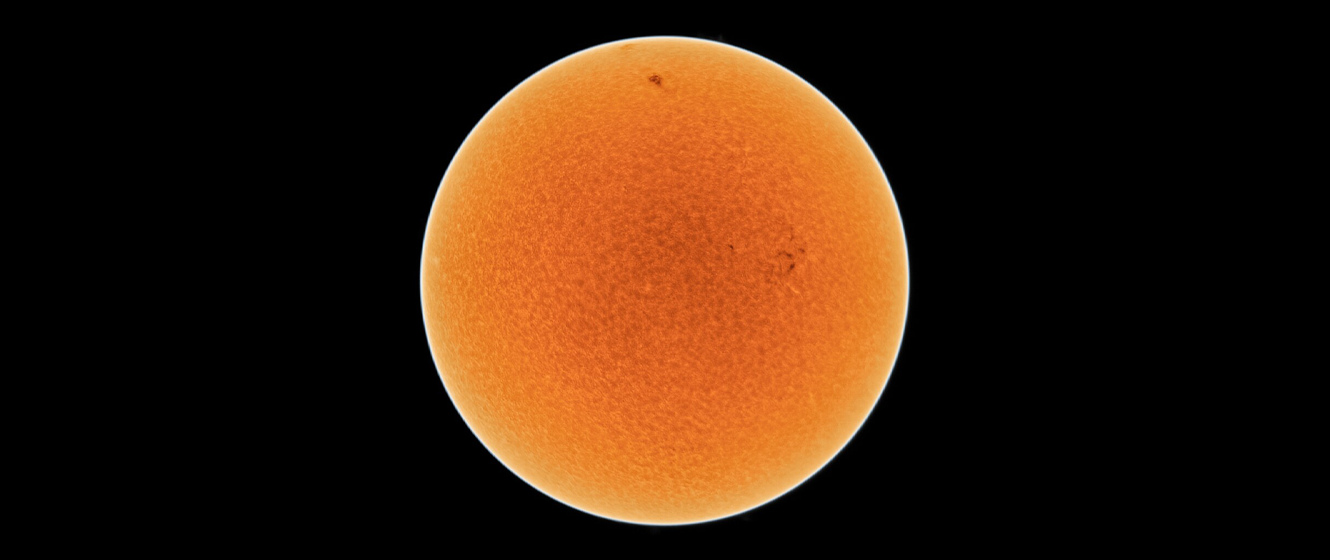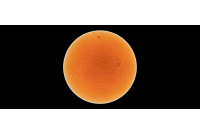
This article will be the first of a series of articles focusing on the concept of the scale of the universe and how much of it we can actually see from our backyards. Our universe is absolutely massive. For example, did you know that it takes light 2.8 million light-years to travel from the Andromeda Galaxy? That means we’re looking at the Andromeda Galaxy as it was 2.8 million light-years ago! In this article, we’ll begin our journey to the edge of the universe starting with the center of our celestial neighborhood: the Sun.
Understand the Speed of Light
To understand scale in our universe, we need to put everything into context of the cosmic speed limit. When we enter a room and turn on a light, the light from that bulb does not reach us instantaneously. As it turns out, light has a speed limit of about 670,633,500 miles per hour. While this may seem incredibly fast to us, to the point where it may as well be instantaneous, this finite speed has significant ramifications as we begin to increase in scale. For example, it takes light about 1.2 seconds to travel between the Earth and the Moon. But for light to leave the Sun’s photosphere and reach the Earth takes 8.3 minutes! That means, when we look up at light from the Sun, we’re looking at the Sun not as it currently is, but as it was 8.3 minutes ago.

How Big is the Sun?
The Sun itself spans about 865,370 miles across. That’s nearly 110x the diameter of the Earth! Additionally, prominences - large plasma jets that shoot away from the Sun - can be nearly as large as the Sun itself at nearly 500,000 miles long! Although most prominences are smaller, similar in size to the planet Jupiter. Sunspots on the photosphere can also be larger than the Earth. Also in the photosphere, we can find solar granules that span 930 miles across, comparable to the size of Texas. The largest part of the Sun’s atmosphere, the Heliosphere, spans nearly 1.143x1010 miles across! That is 123 times the distance between the Earth and the Sun. This distance is so great that it took Voyager 1, the fastest spacecraft ever constructed, nearly 40 years to reach this distance moving at a speed of 38,210 miles per hour.

The Journey of Light from the Center of the Sun
Let’s take a closer look at the journey light must undertake to even leave the Sun. The Sun creates its energy in its core by combining hydrogen and helium at an immense temperature in a process known as nuclear fusion. This process releases energy in the form of photons, the “carriers” of light. Temperatures at the core of the Sun can reach nearly 30,000,000 degrees fahrenheit!
Remember earlier in the article when we mentioned nothing can go faster than the speed of light? Well, the speed of light can actually slow down depending on the medium it passes through. This is true in the center of the Sun as well. Photons get “stuck” in the radiation zone; the second major layer of the Sun, through a process known as “radiative diffusion”. This is because the matter within the radiation zone is incredibly dense. So dense that photons simply cannot travel more than a short distance without smacking into matter and slowing down. It can take light made in the core of the Sun millions of years to actually reach the photosphere!

Eventually, photons will manage to break through the radiative zone and into the convective zone, where it quickly exits the Sun at the photosphere and heads out into space. From here, the intensity of light drops off quickly by the inverse square of the distance, or 1/(Distance)2.
Picking the Right Telescope to Look at the Sun
NEVER LOOK AT THE SUN. At least not without proper equipment. At High Point Scientific, we sell equipment designed for you to safely observe the Sun. These include everything from white light filters, glass filters, and telescopes specifically designed to block out light from the Sun. But with the right equipment, you can observe the photosphere, chromosphere, prominences, sunspots, and more.
The easiest part of the Sun to safely observe is the photosphere. As mentioned earlier, the photosphere is the lowest layer of the Sun’s atmosphere. In the photosphere, we can observe solar granules and sunspots. This is by far the easiest layer of the Sun we can actually see from Earth. A simple white light, glass, or off-axis filter can help you observe the photosphere. Even a simple pair of eclipse glasses will be able to show sunspots.
If you want to observe more detail like smaller sunspots or solar granules through a telescope, we recommend a full aperture film or glass solar filter. Film and glass solar filters, such as the AstroZap Solar Filters and Spectrum Full Aperture Glass Solar Filters, are designed for you to place securely on top of your telescope.
For those with a Newtonian or Cassegrain telescope, you may also wish to consider an off-axis solar filter. An off-axis solar filter helps to reduce the full aperture of your telescope, reducing the turbulence in your image as a result of daytime heating while still retaining a satisfactory image quality.

You can also use a telescope to observe the Sun’s chromosphere, the next layer of the Sun’s atmosphere. These telescopes are typically dedicated solar telescopes. Solar telescopes can peer into different wavelengths of the Sun outside of just purely the visible spectrum, enabling one to resolve more detail. These telescopes typically observe in the H-Alpha or CaK bandpass to see detail in the Sun’s chromosphere and photosphere. With a solar telescope, you can observe more detail on the Sun such as prominences, filaments, coronal mass ejections, and more. A great, beginner-friendly solar telescope is the Lunt 40mm f/10 B500. More advanced astronomers and astrophotographers may consider a DayStar Quark Chromosphere filter.
Lastly, it’s also possible to observe the Sun’s corona - the hottest layer of the Sun’s atmosphere as mentioned earlier in the article. However, the only possible way to observe the corona is during a total solar eclipse. The next total solar eclipse over the United States will be in April 2024. The corona will appear as a large object several solar diameters across on either side of the Sun.

Interested in observing or learning more about the Sun? Check out our Astronomy Hub for more information!












